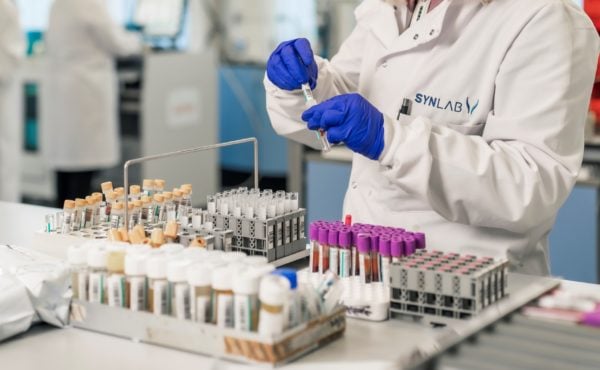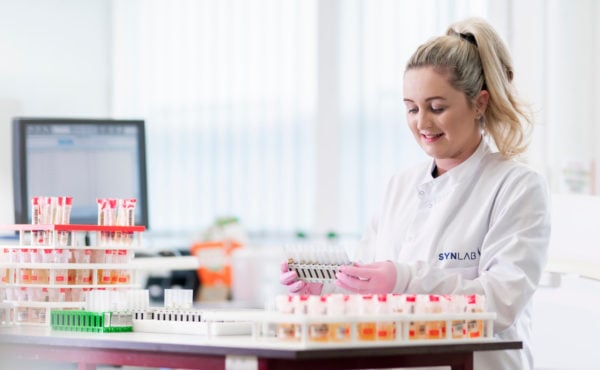Published: 11th June 2024 - All information correct at time of publication.

Workplace drug testing: which option best suits your business?
Anyone who works in a safety-critical environment will know how important it is to have a robust drug testing policy, but we understand that navigating the different options can be daunting.
In this blog, we provide a brief overview on the strengths and weaknesses associated with urine, oral fluid and blood drug testing so you can feel empowered to choose the option that best suits your organisation.
Our method at SYNLAB Laboratory Services involves a screening test which, if non-negative, is followed by a confirmatory test using one of the below sample types.
Urine
Urine drug testing is the most commonly used method for drug testing at work. This is because it offers the most useful window of detection. There is a misconception that a larger window of detection gives you the most information – this isn’t always the case!
Pros
- Easy to collect the sample.
- Urinary tests are cheaper than blood and oral fluid testing.
- Wide range of screening and confirmation options for both drugs of abuse and prescription medications.
- Intermediate window of detection.
- Already widely recognized and accepted internationally in the workplace drug testing community.
- Adequate volume of sample available for testing.
Cons
- Embarrassment and “shy bladder” – there is guidance for how to combat this and put the donor at ease within our training for our collection technicians.
- Site demand – private bathroom facilities.
- Risk of adulteration.
How we manage adulteration:
Adulteration is part of what we test for back at the laboratory and the collection technician also carefully checks for this during the sample collection.
Our collection technicians are trained in procedures to ensure there is no way for a donor to tamper with the sample once alone inside the facilities at the point of giving the sample. This includes:
- Checking the waistband, pockets and socks of the donor before they enter the facilities to ensure they are not carrying anything bulky or unnecessary into the facilities with them.
- Blocking off the taps to ensure no water can be used in place of urine in the sample tube.
- Adding dye to the toilet bowl and cistern to ensure the water from is not added to the sample tube.
- Temperature recording of the sample, which ensures it is freshly voided.
- Listening out for signs of tampering during the sample voiding, such as the rustling of wrappers or bottles opening.
Oral fluid testing
Oral fluid drug testing has a lot of appeal for workplace testing as the sample can be taken in front of a witness, removing any doubt about the validity of a sample and it removes any of the embarrassment about providing a urine sample.
Pros
- Easy to collect the sample.
- Potentially less invasive/embarrassing than urine.
- Short window of detection – therefore capable of detecting more immediate use.
Cons
- Shorter detection window – as drug testing through oral fluid only detects drug presence for up to the prior 24-48 hours, there is a chance of missing drug use that has occurred more than 48 hours prior, especially for cannabis.
- Smaller sample volume collected, therefore less sample available for repeat analysis.
- Oral fluid is unlikely to be a homogenous sample due to changes in viscosity – this can change dependent on a number of variables that can affect the flow of oral fluid, such as time since or until consuming food or drink.
- The collector has to be much closer to the donor in order to take the sample, which has caused some concern since the covid 19 pandemic.
- Adulteration of sample – it has been known for donors to adulterate samples by hiding a sweet in their mouth during the test and this can, in some cases, inhibit the result of the oral fluid test.
Need more information?
For over 30 years At SYNLAB Laboratory Services we have helped thousands of our customers to identify, deter and rule out drug and alcohol misuse within the workplace so we’re well placed to help with any questions you may have.
To discuss your options further, or request a quote for our services, click here.
Published June 11th 2024 – All information correct at time of publication.




